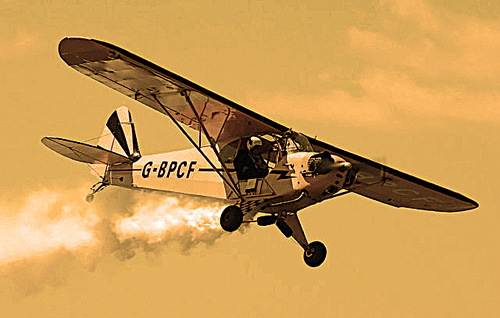INDIAN ARMED FORCES CHIEFS ON OUR RELENTLESS AND FOCUSED PUBLISHING EFFORTS

The insightful articles, inspiring narrations and analytical perspectives presented by the Editorial Team, establish an alluring connect with the reader. My compliments and best wishes to SP Guide Publications.

"Over the past 60 years, the growth of SP Guide Publications has mirrored the rising stature of Indian Navy. Its well-researched and informative magazines on Defence and Aerospace sector have served to shape an educated opinion of our military personnel, policy makers and the public alike. I wish SP's Publication team continued success, fair winds and following seas in all future endeavour!"

Since, its inception in 1964, SP Guide Publications has consistently demonstrated commitment to high-quality journalism in the aerospace and defence sectors, earning a well-deserved reputation as Asia's largest media house in this domain. I wish SP Guide Publications continued success in its pursuit of excellence.
Piper J-3 Cub: Trusted Trainer
When the Civilian Pilot Training (CPT) programme was established in anticipation of US involvement in World War II, the Piper J-3 Cub was chosen as the primary training aircraft. Ultimately, 75 per cent of all CPT pilots trained on a Cub

The Piper J-3 Cub was an American light aircraft, originally designed as a trainer and sports plane. It turned out to be one of the most influential light aircraft ever manufactured. In fact, 85 years after it first appeared, it remains practically synonymous with general aviation in the United States. The qualities that contributed to its sterling reputation were its simple, lightweight design, good low-speed handling, and excellent short-field performance. Its affordability and popularity gave it the tag of “the Ford Model T of the air”.
The Cub’s ancestry goes back to the Taylor E-2 model manufactured by Taylor Aircraft Company in 1930. A few years following the E-2’s introduction, it was redesigned as the Taylor J-2 Cub. In 1937, the company passed into the hands of William Piper and became the Piper Aircraft Corporation. The Piper J-3 Cub was introduced the same year.
The Cub was a high-wing, strut-braced monoplane with a large-area rectangular wing. Its fuselage was a welded steel frame covered in fabric, seating two people in tandem. Even for a light aircraft, the Cub was small. It was powered by a single Lycoming 65-hp engine, driving a fixed-pitch propeller. It cruised at approximately 112 km/h and had a maximum speed of 137 km/h with a ceiling of 2,800 m. The fuel tank held only 45.4 litres petrol, sufficient to cover a distance of 350 km. As compared to the J-2, the J-3 Cub had large, upholstered seating with more legroom, a less cluttered cabin and better controls. However, it had only the bare necessities to function as an aircraft – no electrical system, no flaps and no radio. That was the secret of its light weight and reliability. A unique feature was that due to the location of its centre of gravity it could be flown solo only from the rear seat. The pilot had to look out over the side of the cockpit at an angle best suited for executing a proper landing. While the take-off distance was 110 m, the landing distance was even shorter – just 80 m.
The plane’s 1937 entry into service was very fortunate. When the Civilian Pilot Training (CPT) programme was established in anticipation of US involvement in World War II, the Piper J-3 Cub was chosen as the primary training aircraft. Ultimately, 75 per cent of all CPT pilots trained on a Cub. Sales took off correspondingly. In 1939, Piper produced around 1,300 J-3 Cubs and in 1940, over 3,000. Soon enough, a Cub was being built every 20 minutes. With the entry of America into the War, the US military also urgently required a large number of light aircraft for reconnaissance, observation and liaison duties. And the Cub came in handy, being small and agile, and allowing for quick movement even from semi-prepared grass strips. The Army purchased as many as 5,677 modified J-3 Cubs, commonly known as Grasshoppers. The striking yellow coat of the Cub was changed to olive green and Army J-3s were employed throughout the war. By war’s end, 80 per cent of all US military pilots had received their initial flight training in Piper Cubs. First Lady Eleanor Roosevelt took a flight in a J-3 Cub, posing for a series of publicity photos to help promote the CPT programme. And media images of wartime leaders, such as Generals Dwight Eisenhower, George Patton and George Marshall, often showed them touring the battlefields of Europe in Piper Cubs.
After the War, Piper continued to build record numbers of new Cubs – one every 10 minutes – to meet the surging demand for affordable, light, general aviation aircraft. The plane was cannily priced within the reach of returning war veteran pilots who yearned to relive happy memories of flying their beloved Cubs. When production ended in 1947, 19,888 Piper Cubs had been built, and at least a couple of thousand aircraft are probably flying even today.
Finally, here are two interesting bits of trivia regarding the Piper J-3 Cub during wartime. First, on December 7, 1941, a student pilot, Marcus Poston was on a solo training flight in a Cub, just as the Japanese fighter planes reached Pearl Harbour. On being hit by Japanese fire, Poston kept his cool, bailed out, and parachuted to safety. The Cub thus became the first American plane to be shot down during World War II. The second notable episode happened following the Allied breakout in France when a few Piper Cubs (designated L-4 in US Army parlance) were equipped with improvised racks of infantry bazookas for ground attack against German armoured units. The most famous of these planes was “Rosie the Rocketer”, piloted by Major Charles Carpenter. Its six bazooka rocket launchers were credited with eliminating six enemy tanks and several armoured cars during the War. No mean feat for a lightweight, trainer aircraft!





